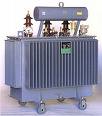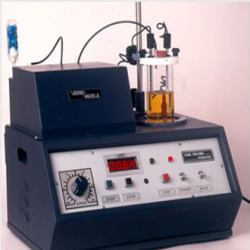Petroleum insulating oils
The main part of petroleum insulating oils make up hydrocarbon components. The exact chemical formula of the oils is not known.
Petroleum oils are obtained by thorough purification of residual oil fractions with an appropriate viscosity level.
Transformer oil
 Transformer oil is the most common dielectric fluid used in high voltage equipment. Oil serves as insulation in power transformers, cables, high voltage circuit breakers. In addition, transformer oil acts as a coolant, removing heat from the windings of electrical machines into the environment. In circuit breakers, oil is used as an insulator to extinguish the arc: the gases released during the rupture of an electric arc help to cool the arc channel and extinguish it quickly.
Transformer oil is the most common dielectric fluid used in high voltage equipment. Oil serves as insulation in power transformers, cables, high voltage circuit breakers. In addition, transformer oil acts as a coolant, removing heat from the windings of electrical machines into the environment. In circuit breakers, oil is used as an insulator to extinguish the arc: the gases released during the rupture of an electric arc help to cool the arc channel and extinguish it quickly.
Condenser oil
Capacitor oil is used as a dielectric in high voltage capacitors.
Insulating oil color
 The color of fresh transformer (capacitor) oil is usually straw yellow and characterizes the depth of oil purification. The transition to a dark yellow color indicates insufficient removal of resinous compounds from the oil. In oxidized oils, used, darkening is associated with the accumulation of oxidation products: the more there are, the darker the oil.
The color of fresh transformer (capacitor) oil is usually straw yellow and characterizes the depth of oil purification. The transition to a dark yellow color indicates insufficient removal of resinous compounds from the oil. In oxidized oils, used, darkening is associated with the accumulation of oxidation products: the more there are, the darker the oil.
Operation of electrical insulating oils
During work electrical appliances, the oils filled in them undergo profound changes due to the aging processes, which leads to the deterioration of the chemical and electrophysical characteristics of the oils. The main factor affecting the aging of oils is the effect of atmospheric oxygen, a strong oxidizer. The oxidation process is accelerated with an increase in temperature, under the influence of an electric field, light, as well as some materials that are active catalysts for the oxidation of petroleum hydrocarbons. Such materials include copper and its alloys.
 When sufficiently powerful discharges occur in the oil, decomposition of hydrocarbons occurs with the formation of flammable gases: hydrogen, methane, etc. In practice, the composition of the gas released from the oil in the working apparatus can be used to prejudge the nature of developing damage in the device. The volume characteristic of the gases released is the oil's flash point—the temperature at which the gas at the surface of the oil ignites when the flame rises. In accordance with GOST, this temperature should not be lower than 135 ºС.
When sufficiently powerful discharges occur in the oil, decomposition of hydrocarbons occurs with the formation of flammable gases: hydrogen, methane, etc. In practice, the composition of the gas released from the oil in the working apparatus can be used to prejudge the nature of developing damage in the device. The volume characteristic of the gases released is the oil's flash point—the temperature at which the gas at the surface of the oil ignites when the flame rises. In accordance with GOST, this temperature should not be lower than 135 ºС.
The insulating properties of the oils must meet the dielectric strength standards.
To extend the service life of the insulating oils, the equipment is sealed — protecting the oil from direct contact with atmospheric oxygen.
Another method of delaying the accumulation of oxidation products in transformer oil is based on the natural circulation of the oil through a thermosyphon filter filled with an adsorbent, a substance that absorbs moisture.

The insulating properties of used oil can be restored by drying the oil. At the same time, the oil is treated with artificial zeolites (molecular sieves). To clean it of mechanical impurities, the oil is filtered through porous partitions, as well as through magnetic filters.
